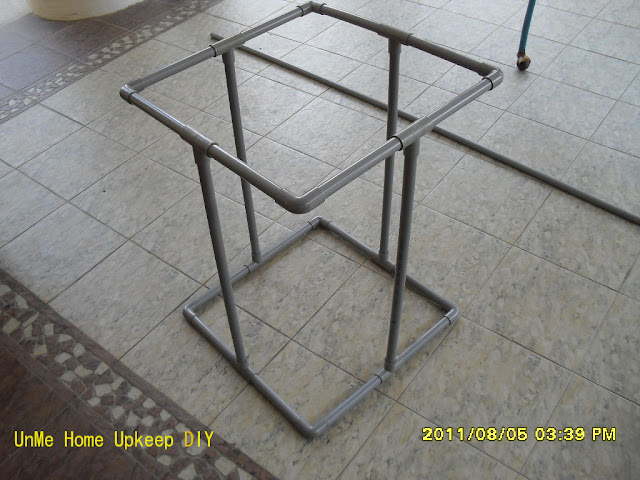 |
| See the faded finishing, especially the lower portion of the doors. |
It is nice to have wooden furniture or doors painted with Shellac to maintain its natural wood grain finishing and enhance its aesthetic quality. But the upkeep of the Shellac surface can be problematic. Shellac is not resistant to water and UV ray. Prolonged exposure to water and UV ray can damage the Shellac surface finishing.
 |
| Close up view of the faded door finishing |
My main door is made from Balau wood. Both the door frame and doors are solid Balau wood. The constant exposure to rain water and sunlight can damage the glossy finishing of the surface. This requires regular Shellacing and Varnishing every three years, to protect the wood from fading.
 |
| See the damage to the door frame. |
Restoring the Shellac finishing of the door looks simple but required lots of skill and patience. Shellac is a solvent based resin and is quick dry. Therefore, attention to the surrounding heat and humidity level is crucial at the time of application. This will ensure a smooth and un-encumbered brushing. If the Shellac evaporated too fast, the brush will turn gummy and sticky. A gummy brush does not give you a smooth finishing. When this happened, dip the brush into some thinner /solvent .
 |
| Thinner and Shellac in bottle are readily available in hardware shop. |
A very thin layer of Shellac is applied for each coat, with three coatings preferred. Between each coat, the dried surface must be sandpapered in order to achieve a smooth finishing.
Use waterproof sandpaper to avoid excessive dust during sanding. Dip the sandpaper into water before using. Select a good quality Shellac brush with soft bristles that does not fall out easily or stick to the coating. Apply the Shellac slowing and gently. The brush stroke should preferably moves in one direction only.
Materials required are:-
1. One bottle of Shellac (RM4.50, USD1.40)
2. One bottle of solvent/thinner. RM3.50, USD1.10)
3. One Shellac brush. RM8.50. USD2.65)
4. Three sheets of waterproof fine sand paper. (RM0.80, USD0.25/sheet)
5. One bottle of Varnish (optional)(RM4.50. USD1.40)
6. One pair of cotton hand glove.RM1.20, USD0.38)
7. A small container to dilute the Shellac to the required viscosity and holding the brush.
8. One roll of masking tape (to insulate non wood area from the brush during painting.)(RM2.50 USD0.80)
 |
| Apply Shellac gently and moves the brush in one direction only. |
Do not do Shellacing with the fan on or during windy weather. You should also avoid extremely hot and dry weather during coating.
This job took 3 weeks to complete with an average of two hours per day (42 manhours).























































